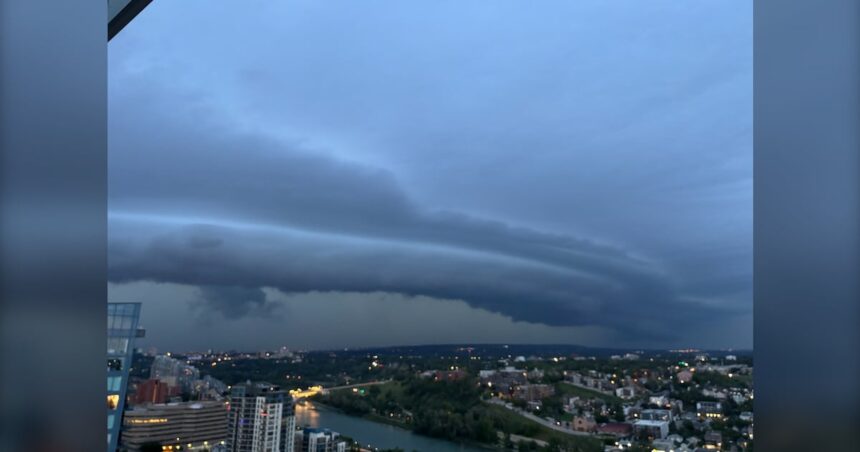A spectacular electrical storm transformed Calgary’s night sky into a breathtaking natural light show Friday evening, as residents across the city witnessed one of the most intense thunderstorms of the summer season.
The storm system swept through the Calgary metropolitan area shortly after 9 p.m., bringing with it a dazzling display of lightning that illuminated neighborhoods from downtown to the outer suburbs. Environment Canada meteorologists recorded over 2,500 lightning strikes within a three-hour period—an unusually high concentration for a single evening event in the region.
“This was certainly among the more electrically active systems we’ve seen this summer,” said Dr. Helena Morris, senior meteorologist at Environment Canada’s Calgary office. “The combination of high humidity and a strong cold front moving in from the Rocky Mountains created ideal conditions for this level of electrical activity.”
The storm delivered approximately 35 millimeters of rainfall in some areas, particularly in the northwestern quadrant of the city, where localized flash flooding briefly affected several intersections along Crowchild Trail and 16th Avenue. Emergency services responded to dozens of calls related to the weather event, though no serious injuries were reported.
Calgary’s Enmax power utility reported temporary outages affecting roughly 4,200 customers, primarily in communities including Huntington Hills, Brentwood, and sections of the northwest. Crews worked through the night to restore service, with most areas regaining power by early Saturday morning.
The Calgary Fire Department responded to three separate incidents of lightning strikes on residential structures, including a home in the Panorama Hills neighborhood where lightning ignited a small attic fire that was quickly contained.
“When we see storms of this intensity, it’s crucial that residents follow safety protocols,” said Battalion Chief Thomas Reynolds of the Calgary Fire Department. “Staying indoors, avoiding contact with electrical appliances, and remaining clear of windows are simple steps that can prevent injuries during severe weather events.”
Social media platforms were flooded with spectacular images and videos of the storm, with hashtags #CalgaryStorm and #YYCLightning trending across Alberta. Several remarkable photographs captured multiple lightning bolts striking the Calgary Tower and other downtown skyscrapers simultaneously.
The Canadian Weather Network confirmed that Friday’s storm was part of a larger system moving eastward across the prairies, with similar intensity expected to reach Regina and Winnipeg in the coming days.
Climate researchers at the University of Calgary note that while summer thunderstorms are common in the region, the frequency of high-intensity electrical storms has increased approximately 18 percent over the past decade—a trend consistent with climate change projections for the Canadian prairies.
“These energetic storm systems require specific atmospheric conditions that are becoming more common as our climate warms,” explained Dr. Amara Singh, climatologist at the University of Calgary’s Environmental Sciences Department. “The increased energy in our atmosphere is manifesting in more dramatic weather events.”
As Calgarians clean up minor debris and survey for damage today, many are left wondering: With climate models predicting increasingly volatile summer weather patterns across the prairies, will these spectacular but potentially dangerous electrical storms become the new normal for Alberta’s summer evenings?

























